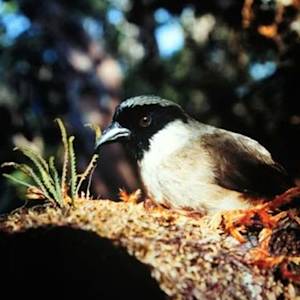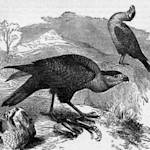Glaucous Macaw
Extinct circa 1960 CE • Argentina; Brazil; Paraguay; Uruguay
Anodorhynchus glaucus was formerly widespread but clearly very local in north Argentina, south Paraguay, north-east Uruguay and Brazil from Paraná state southwards. It was endemic to the middle reaches of the major rivers (Uruguay, Paraná and Paraguay) and adjacent areas, with most records coming from Corrientes, Argentina. It became rare before or early in the second half of the 19th century and there were only two acceptable records in the 20th century, one direct observation (in Uruguay in 1951) and one based on local reports (in Paraná in the early 1960s). Whilst it has been generally treated as extinct, persistent rumours of recent sightings, local reports and birds in trade indicate that a few birds may still survive.
http://www.iucnredlist.org/details/22685527/0
Saint-Hilaire, Bourjot. Glaucous Macaw. Digital image. 1800s. Web. <https://commons.wikimedia.org/wiki/File:Anodorhynchus_glaucus.jpg>. Copy & paste citation


Learn about Maya Lin’s fifth and final memorial: a multi-platform science based artwork that presents an ecological history of our world - past, present, and future.

Discover ecological histories and stories of former abundance, loss, and recovery on the map of memory.

Learn how we can reduce our emissions and protect and restore species and habitats – around the world.

See how art can help us rethink the problems we face, and give us hope that each one of us can make a difference.

Help make a global memorial something personal and close to home. Share your stories of the natural world.


